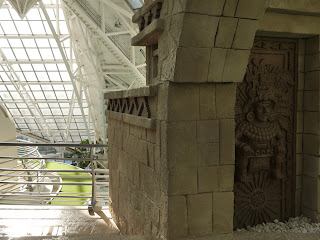It is still not entirely clear how the Neanderthal was replaced by a modern type of man. It is known that he appeared as if suddenly in Europe, Southeast Asia and Africa. In Palestine, the skeletons of Neanderthals were found, more developed than their other relatives, already possessing the signs of a person who was formerly called a Cro-Magnon, and now they prefer a more general name - * a man of a modern type *. (He is called in Latin homo sapiens sapiens - as if "twice reasonable man" in comparison with the Neanderthal, who is only homo sapiens neandertalensis - "reasonable Neanderthal man".) The people who replaced the Neanderthals 40-30 thousand years ago no longer had features , which gave their predecessors a somewhat bestial appearance: their arms became less powerful, their foreheads became higher, they had a chin protrusion.
The appearance of modern man coincides with the beginning of the last period of the ancient Stone Age - about 35 thousand years ago. In this era, which did not last long compared to the previous ones - only 23-25 thousand years, people settled on all continents, except, of course, Antarctica. Through the "bridges" that arose due to glaciation, they penetrated into Australia. This happened, as is believed, about 20 thousand years ago. Probably, America was settled 40-10 thousand years ago: one of the ways people penetrated there was the bottom of the Bering Strait, which was dry land. Thus, the real discoverers of new continents were by no means European sailors, but people of the Stone Age.
At that time, the technique of making stone tools reached a very high level of development. Many of them were now made from regular-shaped plates, which were separated, “squeezed out” from the prismatic-shaped cores. Plates of different sizes were subjected to additional processing, blunting the edges or removing thin scales from the surface using a bone or wooden tool. The most suitable stone for making tools was flint, which is often found in nature. Other minerals were also used, which easily split, were quite hard and fine-grained. Some knife-like plates were so sharp that they could be shaved. The technique of making tools and weapons became virtuoso. It was at this time that the forms of many things were formed, which later began to be made of metal: spearheads, daggers, knives.

Комментариев нет:
Отправить комментарий